
You are logged in as
Logout
You are logged in as
Logout
Dear Parents and Caregivers
As most of you know, Rector, Christine Leighton, is currently in Scotland, offering her support to the Pipe Band participating in the World Championships this weekend. As a result, there won’t be a report from her in this issue of On Strowan.
At school we have hit the ground running this term, with both students and staff having very busy schedules both inside and outside of the classroom.
There is a very positive and happy buzz around the campus. I continue to visit classes, workshops, and portfolio presentations in subjects including Technology, Art, Digital Technology, Health and Physical Education, and Design and Visual Communication. The ideas and quality of the portfolios and end products is impressive, the passion for what the students are trying to achieve, and the extra work they are putting in, is evident. I am both grateful and honoured that the students are willing to share their learning journeys with me.
Our sports teams have enjoyed significant success this winter, with many of our teams having earnt the right to take part in the semis and finals of their respective competitions.
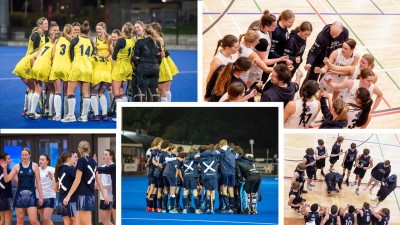
Some notable achievements are the 1st XI Girls’ hockey team who had a tough semi-final against St Margaret’s College, winning, and they will now play against Rangi Ruru Girls’ School in the final tomorrow evening. The Girls’ A basketball team will be competing in their competition final against Rangiora High School next Tuesday and the 1st XI Girls’ football team, who remain unbeaten, will be playing in their competition semi-final next Monday, as their game last night was postponed due to the weather. Last night, the Senior A netball team played against St Margaret’s College in the SuperNet final, sadly losing 26–34 in what was a highly contested game.
To say the students are excited about Winter Tournament Week would be an understatement. We will have a record number of teams competing up and down the country. There is a quiet optimism about how the teams will perform based on how well our teams have performed this season in the local competitions. It is my good fortune to be able to travel to the deep south to support our Senior A netball team in Invercargill, the Boys’ and Girls’ Junior and Senior basketball teams in Dunedin, the ice hockey team also in Dunedin, and the Girls’ 1st XI hockey team here in Christchurch.
On Monday 21 August we will be running a Teacher-Only Day for staff who will be working together to review and plan for the changes which come into effect for NCEA Level 1 in 2024. The Ministry of Education have directed all schools to run teacher-only days to prepare for the impending changes. Please note that we do not make the decision to have a Teacher-Only Day lightly, however, the time constraints and the very late release of information from the Ministry of Education has resulted in considerable time pressure on us to prepare a high-quality programme for 2024.
Thank you to all of you who supported the Parent-Student-Tutor Conferences at the beginning of the term and the Parent-Teacher Interviews held last this week, it is a real point of difference that we can have regular meetings between the tutor or teacher, and the family. As always, I have had a lot of very positive feedback about them, especially with respect to the option of being able to have the interviews online or in person.
Can I please ask you to encourage your child to prepare as best they can for the Prelim examinations. The marks your child achieves will be the ones awarded if they are unable to sit the end-of-year NCEA examinations.
After the Prelim examinations, we will once again have the Parent-Student-Tutor Conference on the last Thursday (Friday for boarders) of the term. The focus of this conference will be what went well in the Prelim examinations, and what the next steps need to be to ensure your child’s potential is achieved in the external NCEA examinations. Straight after the Prelim examinations, teachers will provide feedback to every student, which they will record in an online portal. The information recorded in the portal will be used in the conference as a starting point for discussion. In Term 4, the tutor will sit down with every student to check how their plan is progressing and what might need to be modified. We are hoping this immediate and specific feedback will better help students prepare for their NCEA examinations.
At the beginning of the year, after significant consultation, we reset the scale for the ‘Fortnightly Feedback’ grades with a three representing what we would normally expect from a student, a five indicating an exceptional attitude and effort, and a one being a serious cause for concern necessitating a phone call home. If you have any feedback on the ‘Fortnightly Feedback’, please email me on EVA@stac.school.nz.
We continue to have a real focus on how students are wearing their uniform and on their personal grooming. I kindly request you check that your child is correctly equipped as we transition into spring.
Kind regards
Evert van Florenstein
Head of Secondary School
Deputy for Rector
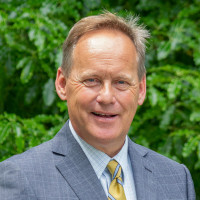
AUGUST
18 Cultural Assembly, Gym 1
21 Secondary School NCEA Changes Teacher-Only Day
23 Secondary School Parent-Teacher Interviews, Gym 2
23 2024 Curriculum and Co-curricular Option Selections close at 5.00pm
24 Winter Sports and Co-curricular Photo Day
SEPTEMBER
5 StACTalks: Vaping and the Party Season
14–17 New Zealand Artists @ St Andrew's,Centennial Chapel
15 Film Fest, Senior College Common Room
16–17 Dance Revue, Gym 1
20 StAC Ag Show
22 Term 3 ends
Please view the fixtures on the College intranet for more upcoming events. The intranet is updated daily.
Visit the College intranet, StACNet >
The Pipe Band art show is back! Showcasing the work of talented professional artists, the art sale offers you the chance to own remarkable local art while supporting our Pipe Bands. With many wonderful artists from all over New Zealand contributing artwork, this is a fabulous opportunity to snap up a unique piece for your home or office.Your purchase will directly contribute to our Pipe Band 2023 World Championships and 2024 National Championships fund. You will also have the chance to win $500 towards a piece of your choice with our Art Show raffle – entry forms will be available in the Centennial Chapel throughout the Art Show.
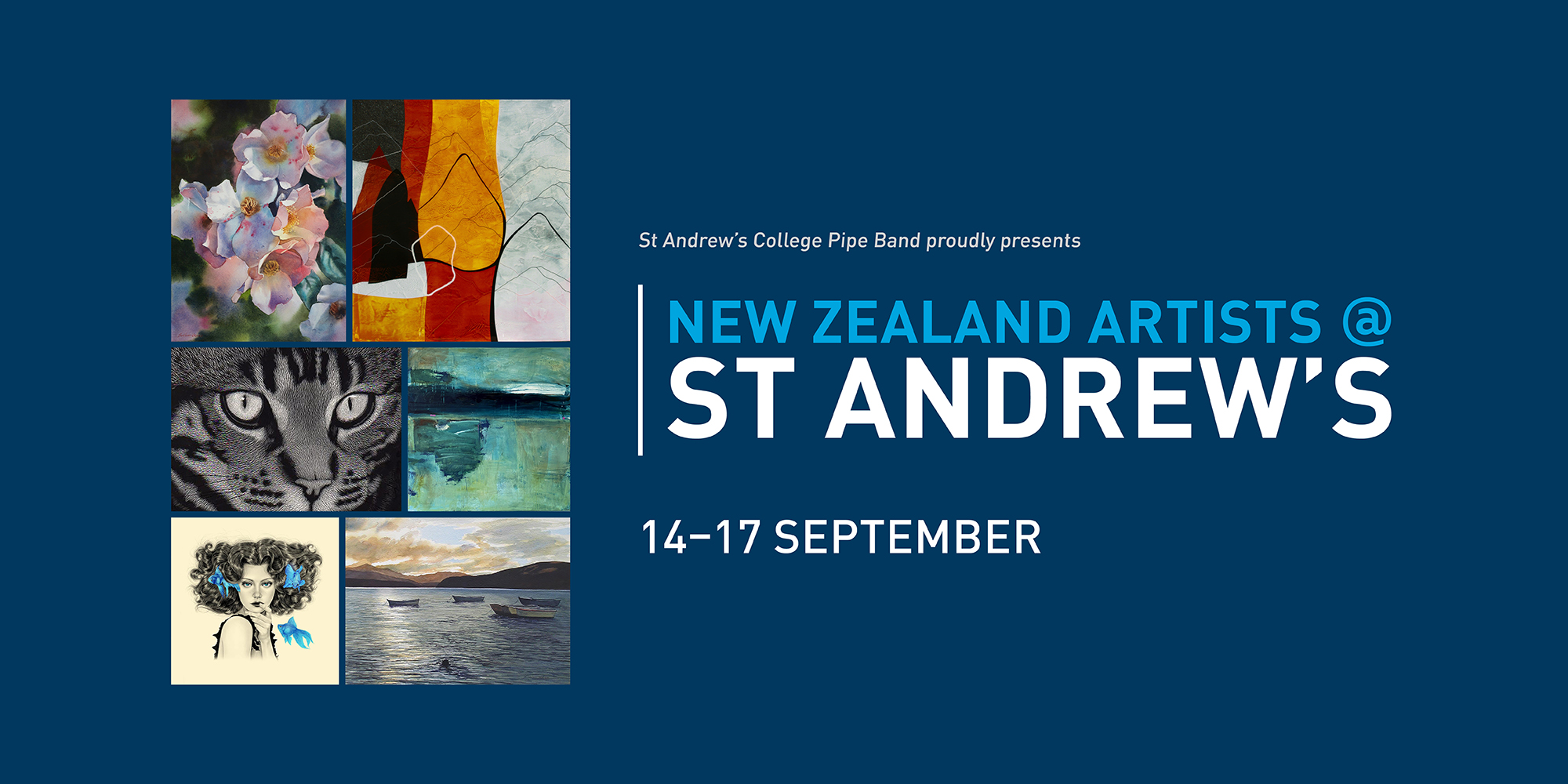
In Week 3 of this term, the Religious Education and Chaplaincy team had the fortunate opportunity to attend the annual RE Teachers and Chaplains of New Zealand Church Schools Conference in Wellington. This was followed by the Presbyterian Church Schools Conference for Chaplains, Principals, and Board members. Our Board Chair, Felicity Odlin, and Presbyterian Board Representative, Peter Nelson, attended the second conference with Assistant Chaplain, Ben Hughes, and myself. Both conferences addressed issues of inclusivity, and the importance of creating safe spaces for our LGBTQ+ and neurodiverse students. It also addressed what honouring Te Tiriti O Waitangi within our Special Character space might look like.
A few years ago, I was completing my Theology degree via Otago University. A research paper I did looked at marriage and sexuality. In my time at St Andrew’s College and interacting with young people I often heard views on this topic, and Christians. It wasn’t too different from Kinnaman and Lyon’s research in that young people perceived Christians, and the Church as, ‘anti-homosexual, judgmental, and hypocritical.’ Sadly, these perceptions are having a major influence on people’s perceptions of Jesus and the Church, and how they are reacting to the Gospel. In some cases, young people are rejecting Jesus because they themselves feel rejected, and yet the way of Jesus, in first century Palestine, was reckless in its embrace of the marginalised.
One of the conference speakers that stood out for me was Rev. Scottie Reeve. He spoke from Luke 13:18-19 about ‘The Mustard Seed’. Scottie is an Anglican priest in Brooklyn and does an incredible work supporting and acting as an advocate for numerous diverse groups within Wellington. He wrote Twenty-one Elephants: Leaving Religion for the reckless way of Jesus.
Scottie spoke of the mustard seed as a plant that grows and becomes something that birds shelter in. In the Old Testament, the prophet, Isaiah, spoke of a Messiah as a shoot of a plant – almost undetectable like a mustard seed, insignificant, even unforgettable like. Christians can have the temptation for the spectacular rather than the ordinary mustard seed. Scottie spoke of chaplains coming and going yet the seeds they plant lasting generations. Therefore, care needs to be taken in our planting.
What is interesting about the mustard seed is that it was known as a noxious weed because it would take over the ground around it. In parts of Israel, it was banned. Scottie challenged those as chaplains and RE teachers to a courageous ministry for justice. The mustard seed takes time to emerge, but it eventually does, and many come to dwell within it. It emerges as a home and a shelter. Thus, the smallest of things are to be grateful for. A mustard seed is like yeast that transforms its contents. Scottie spoke of the opposite of love as not being hate but indifference. He challenged our ministry to be a sheltering ministry that is not indifferent.
Scottie quoted Thomas Fuller, ‘He that plants trees loves others beside himself.’
The challenge for us as a community is how our differing beliefs and ideas can forge an ongoing conversation that is respectful, humble, and hospitable, and that ultimately, we can have a community that can agree to disagree and yet maintain one another’s humanity.
Henri Nouwen, a Dutch Catholic priest, theologian, and author, wrote this of hospitality:
‘Hospitality means primarily the creation of a free space where the stranger can enter and become a friend instead of an enemy. Hospitality is not to change people but to offer them a space where change can take place.’
I pray that all students, no matter what their belief or what they identify as, would experience the embrace of Christ, his unconditional love and grace, through the inclusive and hospitable space St Andrew’s College provides. I truly believe that Jesus transforms people’s lives. My hope is that all students feel God’s embrace despite how they feel others may perceive them.
God bless.
Rev. Paul Morrow
College Chaplain
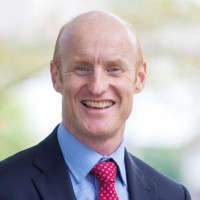
Welcome to a busy and crazy Term 3 where we have had plenty going on! From special assemblies, fundraising events, and curriculum evenings to our StACTalks parent nights, winter sports finals, and even a junior dance, Term 3 always packs it in and keeps everyone on their toes. Overall, the Middle School students have been very settled. It has been great to meet and work with a wider number of Middle School students this term in many different capacities.
Term 3 is one of my favourite terms because we head towards springtime and really knuckle down into our learning. It is also a term where we start looking forward into next year and make decisions about what it will look like. I would encourage all parents and students to carefully consider their options for next year. Overall, my advice would be to keep the pathways open, especially for those in Years 9 and 10. Students have received their curriculum option selection information and the subject selection window will be drawing to a close. It is essential that students think carefully about their options and keep the net open in terms of future pathways. All three Deans and I are available to discuss future options for your child if you are struggling to make these choices.
I wish all students well for the important NCEA Prelim examinations coming up from Wednesday 6 September. Work hard and you will get what you deserve.
Matt Parr
Head of Middle School
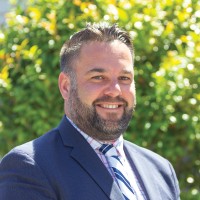
We are over halfway through the Year 10 winter camps now and they have been very successful, and our Outdoor Education team at Castle Hill are doing a great job. I have heard some amazing stories from these experiences, including a good amount of snow in recent weeks. I am looking forward to getting up there in Week 6 myself with Class 10A. I know that the classes yet to attend are very much looking forward to it too.
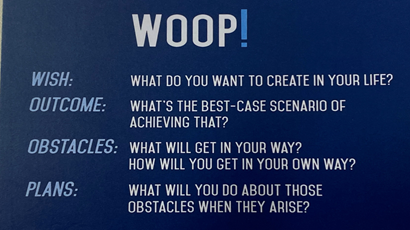
It is feedback season as all students prepare for the business end of the year. I do hope that those of you who engaged in Parent-Tutor Conferences at the beginning of this term found them valuable. Having students go through the process of setting some WOOP goals and reflecting on their year to date is a fantastic way to encourage them to be accountable for their own education journey and well-being regardless. WOOP is an evidence-based goal setting technique based on over 20 years of research. Unlike many other goal-setting frameworks, WOOP, guides you through a process beyond simply thinking about a ‘wish’ you would like to achieve.
For those with children in Years 9 and 10, we hope you found benefit in attending one of the two Parent-Teacher Interview evenings on Tuesday 15 (online) and Wednesday 23 August. This interview should provide a platform to follow up on any questions from our formal reporting round earlier in the year, and a chance to check on progress or ask any other questions.
Following the Prelim examination period, there is further opportunity for parents of Years 11–13 students to attend Academic Conferences with class tutors. These conferences provide feedback from Prelim examinations and help to establish what is required in terms of final preparation to NCEA examinations, which begin at the start of November.
Day student families from 2.00pm–6.00pm on Thursday 21 September.
Boarding families from 1.30pm–3.00pm on Friday 22 September.
Kia ora koutou e te whānau
Today I have once again been reminded of the power of community, and the role that schools play in bringing people together.
The catalyst was our Monday Focus meeting – a programme run on Monday mornings for our Year 13 students, which aims to expose students to a range of speakers who talk about their own career paths and then about the work they are currently doing. We hope to encourage our students to think ‘outside the bubble’, and also to understand that career paths outside school rarely run in straight lines. This morning we had the privilege of hearing from St Andrew’s staff member, Fariya Naseem, who has leave of absence this year to develop her personal coaching business ‘Life Coaching with Fariya’. This was an inspirational session where we heard Fariya’s personal story of courage and challenges, as well as some important messages about mindset, grit, and the domino effect of small actions.
The warmth of our students’ appreciation at the end of this talk was very noticeable, and I reflected afterwards that at least part of this was due to the fact that Fariya is a teacher here. It’s easy to forget that staff have their own personal journeys, experiences and relationships, and that these have shaped us as people in the same way as anyone else in our community. We don’t live in closets at school and just appear every Monday morning! Fariya’s story highlighted the rich diversity of our community, and also reminded students that learning and taking on new challenges is a lifelong pursuit. We may not know what is ahead in the next five years, but we can all try new things, develop new skills, and have a positive mindset towards growing and changing.
The remainder of Term 3 is moving at a rapid pace: our Year 13 students only have eight school weeks left before they leave for NCEA externals! I wish you all energy and perseverance as we move through the winter and into spring together.
Ngā mihi mahana / Warm greetings to you all.
John Ruge
Head of Senior College
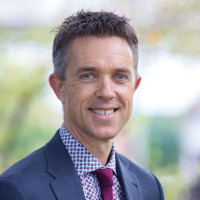
A reminder that online course selection forms for 2024 are now available and must be completed by 5.00pm on Wednesday 23 August. It is vital that students meet this deadline, as priority will be given to those who have their choices handed in on or before this date.
If you have any questions or concerns about course choices for next year, there are a number of staff who are available to help and advise you and your child. Please feel free to contact relevant subject teachers, Heads of Departments, Deans, our Careers Counsellor, or me if you would like to discuss anything to do with the process.
NCEA Prelim examinations will be held on Monday 21 August (Level 2 English Literature/English Extension and Level 3 Biology) and from Wednesday 6 to Thursday 14 September (inclusive) for all Year 12 and 13 students. These are extremely important, and students need to be well prepared. The results from these examinations form the basis for any estimated (derived) grades if students are sick or cannot attend the end-of-year externals, and they also provide a very good indicator of progress towards final examinations in November.
Day students do not need to attend school between examinations unless they have study classes or scheduled times for practical/portfolio-based subjects.
On Thursday 21 and Friday 22 September we will hold Parent-Student-Tutor Conferences where students will talk about their examination results, reflect on what they have done well and what they need to improve, and present a study plan for the NCEA externals in Term 4. Head of Teaching and Learning, David Bevin, will send you more information about these conferences closer to the time.
Term 3 has resumed in a very positive manner with a full and vibrant programme of winter sport fixtures. Students continue to thrive with the opportunities presented and have many enriching experiences through participating and engaging with the co-curricular programme. In recent weeks I have enjoyed watching some very good fixtures.
Our teams will be emphasising teamwork and preparation as we approach the end of the winter sports season. For many teams there is the excitement of Tournament Week, and we wish them all well in striving for their own team and personal goals. It has been a pleasure to attend sideline and witness so much support for College teams across all sports. For eighteen sports teams, the focus will move towards winter Tournament Week with teams attending tournaments from Auckland right down to Invercargill.
We wish them all well.
Mark Lane
Director of Sport and Cultural Activities
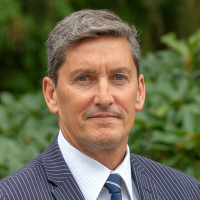
This year canoe polo came back on board after a number of years in the wilderness as our latest sport offering. For some of you, you may ask yourselves, what is Canoe polo? The best way to describe it is basketball on water.
Canoe polo is a game of two halves of 10 minutes where two teams of five players battle it out with a water polo ball. The aim is to score into a goal, which is suspended above the water at each end of a rectangular ‘playing pitch’. These pitches can be on open water, or they can be on a swimming pool. Matches are controlled by referees and the fast, explosive action from players encompasses a wide range of canoeing.
Canoe polo is a game for everyone. At club level thousands of players – boys, girls, men, and women – compete against each other in competitions graded according to skill level. It is ideal for paddlers who wish to improve their all-round canoeing skills. Highly skilled players at national and international level display exceptional kayak control, fitness, and ball skills, which provide some superb sporting action for spectators.
Canoe polo is now played by 50 countries in all continents of the world.
In Christchurch, canoe polo is played at the Roto Kohatu Reserve, off Sawyers Arms Road. If your child is interested in giving this sport a go, please contact Teacher in Charge, Mark Lane (MLA@stac.school.nz) who can organise for them to attend a ‘have -a-go’ session, which is coming up early Term 4.
Towards the end of the term most students will start to practice for summer sport in Term 4. In most cases students continue with the same sport and team as they participated in during Term 1. It is important that there are limited changes to ensure that the same teams can be entered in competition. Students must see Sports Co-ordinator, Ms Ward, in the Sports Office should they need to change their option in justifiable circumstances.
Our expectation is that all students up to Year 12 are fully involved in the co-curricular programme, and it is encouraged for all Year 13 students to be involved. The key aim is to assist all students find a sport or activity that enriches their lives and puts them on the path to lifelong participation. Should you have any queries regarding your child’s involvement in co-curricular activities please do not hesitate to contact your child’s tutor. Our Sport and Cultural Handbook is also a very good reference for programme information. This can be found in StACNet – click here.
If you have any queries regarding competitions organised by School Sport Canterbury, please do contact either Sports Co-ordinator, Leanne Ward LPO@stac.school.nz or me at MLA@stac.school.nz. Parents are not to contact the School Sport Canterbury office directly. Most of the key information is on their website (click here).
How much is too much when it comes to youth sport? - A guide to understanding specialisation, playing multiple sports, and training load
by Hamish Rogers, Editor-in-Chief of balanceisbetter.org.nz.
Recently, lots of guidance and advice has been aimed at coaches, parents, and sport leaders and administrators about how much sport young people should do, and whether young people should participate in one sport or many. This guide has been produced to shed more light on the concepts of specialisation, early specialisation, playing multiple sports (also known as sampling), training load, overuse injury, and overtraining.
These concepts all underpin the guidance and advice provided about the amount of sport and the number of sports young people should participate in. The guide concludes with practical takeaways for how coaches, parents, sport leaders and administrators should apply this guidance and advice.
A recent conversation with a colleague drew my attention to the need to produce this guide. We were both commenting on how often we were hearing people talk about the need for young people to “play multiple sports”. While on the surface we both agreed with this statement, it was some of the behaviours surrounding some of these “play multiple sports” conversations that suggested the message was perhaps becoming oversimplified.
Before we begin to talk about training and competition load, and specialisation versus sampling other sports, it’s important to note that we want all young people in Aotearoa / New Zealand to be physically active, which could be through sport, active recreation, or play.
To outline what good levels of physical activity for young people look like, we draw from World Health Organisation and New Zealand Ministry of Health guidelines for physical activity for children aged 5 – 17, which state:
We want to encourage all New Zealanders, especially young people, to be physically active because of the extraordinary individual and collective benefits this brings.
Specifically, with regards to children and adolescents, short and long-term benefits from undertaking regular moderate to vigorous physical activity include:
Sport NZ’s Value of Sport survey found that:
In summary, it is important to recognise that being physically active is important and extremely beneficial to people’s physical, mental, social, emotional, and spiritual wellbeing.
On one hand you hear we should be doing more sport, and on the other you are hearing we might be doing too much? It’s understandable how this might be confusing. To think about this, I like to apply the Goldilocks principle. That is, people, including young people, tend to be in one of three physical activity camps:
For Sport NZ, a lot of the work we do is targeted at young people who fall into the camps of doing “too little” physical activity, as well as continuing to support people who fall into the camps of doing “just right” amount of physical activity. In the past two decades, however, we have also begun to recognise that some young people are doing “too much” physical activity.
By and large, the setting where young people do too much physical activity is through sport. The reasons underpinning this trend are numerous and complex, which I won’t go into here, but essentially these guidelines and advice on training and competition load, as well as on early specialisation, have been developed to protect the group of young people that fall or may fall into the “too much” camp.
While slightly outside of the scope of this guide, it is important to recognise that our sport system (leaders, administrators, coaches, parents, etc.) generally focus more time, effort and resource into the young people who are doing too much sport or are perceived to be talented.
While not intended, this bias of focus, energy, and effort is detrimental to young people who are late developers or born later in the year (or later in the chronological grouping a competition organises young people into). Additionally, there is an opportunity cost here, where a focus on supporting the so-called more ‘talented’ also means that resources, time, and energy are not being put into meeting the needs and motivations of the young people who are doing “too little”.
With regards to guidelines and understanding definitions, we draw from the Australasian College of Sport and Exercise Physicians (ACSEP) Position Statement on Sport Specialisation in Young Athletes.
In short, there are two things to consider here:
Not surprisingly, these things interrelate – we will talk more about that later. But it’s easiest to understand them individually first.
Sport specialisation is defined as the intensive, year-round training in a single sport at the exclusion of other sports.
The extent of a young athlete’s (18 years and under) specialisation can be initially gauged by asking three questions:
Answering yes to two of the questions indicates that the athlete has begun to specialise.
‘Early’ specialisation is defined as sport specialisation occurring before the age of 12. It is important to understand, however, that just because a young person has reached age 12, does not necessarily mean it is now appropriate for them to specialise in a sport.
The appropriate time for each young person to specialise is context specific, and will depend on a number of things, including:
We believe that for most sports the appropriate age to specialise will be much later than 12. In addition, we believe intense training in one sport at the exclusion of others should be delayed until middle to late adolescence (i.e., 15 years plus).
For the past seven years, High Performance Sport New Zealand (HPSNZ) have been tracking the age at which athletes who enter into the High-Performance Athlete Development system specialised in their respective sport. They have found that on average these athletes specialise in their respective sport at age 15 years and 5 months.
While a few successful athletes’ development journey has followed an early specialisation pathway, many have not. People will look at athletes who have specialised early and hold this up as THE model for athlete development. We need to be mindful that they are doing so retrospectively, and that they are not acknowledging the athletes who may have followed a similar pathway but did not become elite.
Additionally, research shows that that specialising early in a sport:
And with a few exceptions, specialising early in a sport may have short term benefits for performance at junior level, but does not correlate with increased performance at elite-level (i.e., it may help get you the best 12-year-old but not the best 22-year-old).
Lastly, early specialisation comes with an opportunity cost – young people who specialise early miss out on the benefits associated with participating in multiple sports.
Participation in a variety of sports has been shown to support the following benefits:
Recent research by HPSNZ found that athletes in its pre-high-performance network (athletes predicted to be 8-to-12 years from reaching a pinnacle event, e.g., Olympics or World Cup), on average, reported:
As discussed earlier, there are benefits to being involved in multiple sports. Conversely, early specialisation may expose young people to increased risks.
The basis for this thinking is ultimately about the variety of experiences versus the uniformity of experiences.
A greater variety of experiences promotes a wider range of benefits in terms of young people’s biological, psychological and social development. In turn, this supports both sport-specific development and youth development more broadly.
So, when adults think about how they can support young people to play multiple sports, they should be considering the right mix of sports to expose a young person to:
Playing multiple sports that are similar (such as Football and Futsal; Netball and Basketball, Rugby and Rugby Sevens) may provide some variety but perhaps not all of the benefits outlined above.
In particular, playing very similar sports may mean that young people are doing similar movement patterns, which may increase rather than decrease the risks of overuse injury.
The term ‘load’ reflects two aspects of physical activity:
Generally, guidelines developed around training load mostly refer to volume. This is because volume can be measured using units of time.
The Australasian College of Sport and Exercise Physicians provide the following guidelines around training volume:
With regards to measuring training intensity, there are many methods, both objective and subjective, to measure intensity. Examples include:
Significantly, because collecting and analysing data about intensity often requires expertise, resources, and time; and because there are a number of different methods to analyse intensity. There is no one universally accepted guidance around training and competition intensity, other than to say intensity increases should be phased gradually and extreme spikes in intensity should be avoided (coaches who do not manage this well may see more injured players).
Overuse injuries are the results of repetitive stress to the musculoskeletal system without enough time for recovery.
Signs of overuse injury include:
Overtraining syndrome is simply doing more training and competition than the body can recover from before the next training load is experienced.
Overtraining will eventually lead to declining performance and very likely injury and/or illness.
Overtraining negatively affects the biological, hormonal, and neurological systems in the body. Parents and coaches are best placed to monitor for overtraining and ultimately should be mindful to balance long-term development outcomes of young people (and ensure they are not hindered by overtraining) with the demands of current training and competition loads.
A rough rule of thumb is that a young person is overtraining if the number of hours they spend doing training and competing in a given week is more than their age. Other signs include:
For parents and coaches of female athletes, it’s also important to understand the overtraining considerations that are specific to girls and young women.
These guidelines have been developed to support adult thinking about how best to provide and support quality sport experiences for young people while minimising the likelihood of young people overtraining or overloading. It’s important to note that they have been developed at a population level, and therefore application for individuals warrants the following additional considerations:
Overtraining and overuse injury can occur without sport specialisation or early sport specialisation, as training and competition load is the main determining factor.
However, young people that have specialised in a sport, especially young people that have specialised early, are more likely to be predisposed to the risks of higher training and competition loads, e.g., injury and illness. Additionally, often very little or not enough emphasis in these environments is placed on rest and recovery.
There is also a number of growth and development factors that further puts adolescence at risk when experiencing high training and competition loads.
Some of the biological factors putting young people (compared with adults) at further risk of injury and illness include:
Significantly, training and competition loads that mimic the loads of elite and professional athletes (or start to get close to those levels), often become the norm for young people going through puberty, particularly as they enter towards peak height velocity, and can have detrimental short and long-term effects. It is often for these reasons that restrictions on specialisation and participation volume are suggested in sport guidelines for children who remain musculo-skeletally immature.
It’s important to acknowledge that some young people will show signs of wanting to go ‘all-in’ early. They love their sport and just want to do it all the time. Trying to support these young people to retain balance without compromising their development is a challenge.
Key things that parents and coaches can do to best support young people who are like this include:
For sport administrators and leaders, they should:
For coaches, they should:
For parents, they should:
Another busy term in the Performing Arts Departments. There is a lot coming up this term, so please check the upcoming dates carefully.
This week, Cultural Captains, Mia Walker and Marco Leighs, have led the Cultural Council as they put together a fantastic week of events for students; with events each lunchtime and an exciting Cultural Assembly coming up at the end of the week.
Starting spring in the right way, our annual Jazz Club will take place on Saturday 2 September from 2.00pm at Fat Eddie’s. We hope you can come along and listen to the fantastic work from the jazz musicians after their successful tour of Nelson.
Heads of Dance, Sophie March and Sienna Spark, are creating the annual Dance Revue for 2023 on Saturday 16 and Sunday 17 September.
Please join us for the annual St Andrew’s College Film Fest on Friday 15 September from 7.00pm in the Senior College Common Room.
This is a fun, family-friendly event where we celebrate our talented St Andrew’s filmmakers, so please support by coming along to celebrate with them. Prizes will include Best Film, Best Director, Best Cinematographer, Best Actor/Actress, and many more, including some cool spot prizes.
Tickets are $5.00 (no door sales).
1 September: Aurora Festival, Orchestras, 12.00pm to 3.30pm, Aurora Centre Auditorium, Burnside High School
2 September: Jazz Club, 3.00pm at Fat Eddie’s
13 September: Encore – Junior Singing Festival, Stacchorus
14 September: Little Mermaid full day rehearsal
17 September: Staccoro rehearsal afternoon to prepare for Vocal Concert
18 September: Performance Evening
19 September: Rock School covers and originals night, 7.00pm at A Rolling Stone
20 September: Vocal Concert, 7.00pm in the Chapel - all choirs and soloists
21 September: Zitsprobe Middle School show
